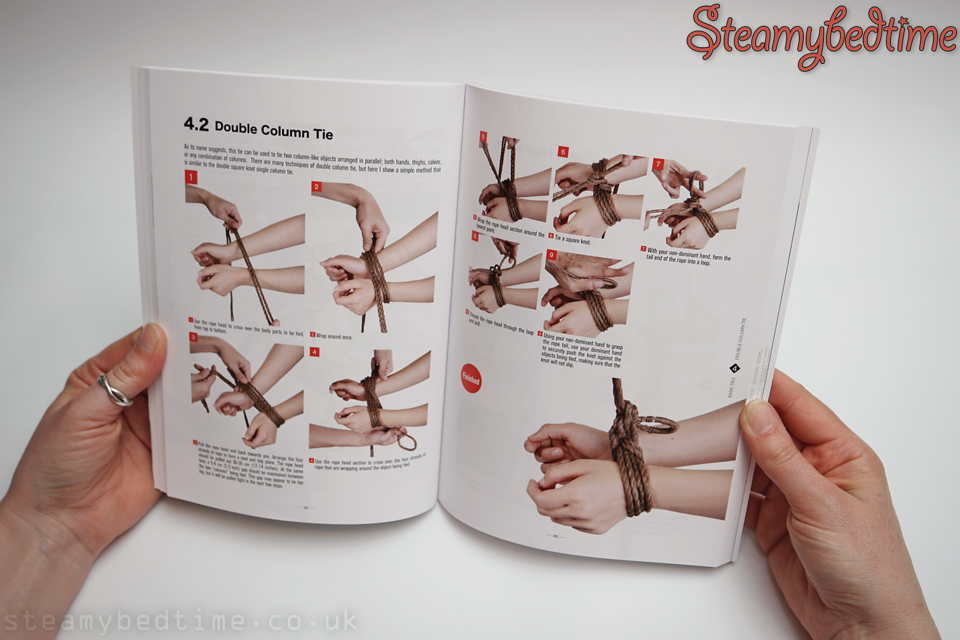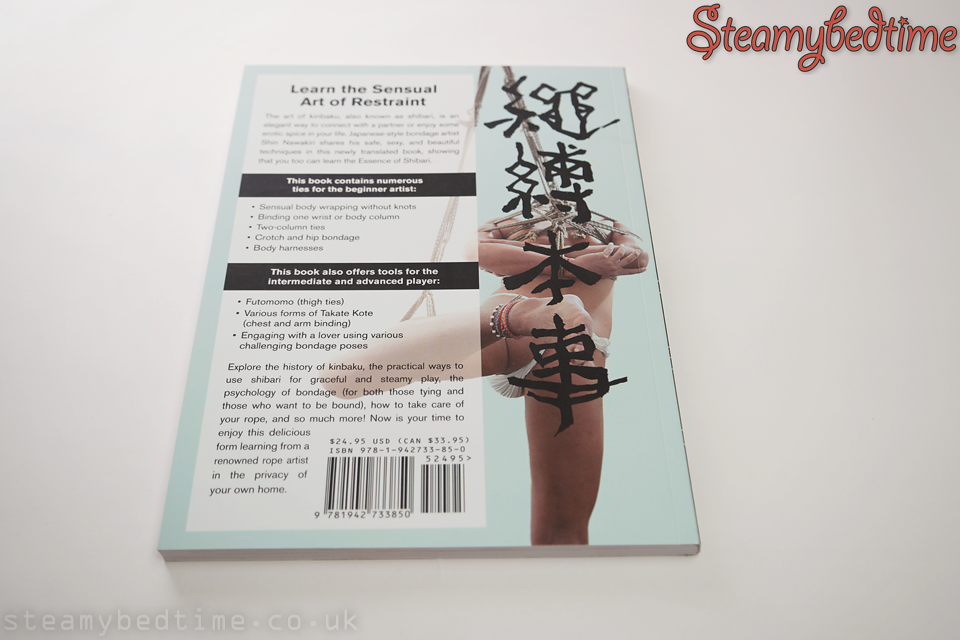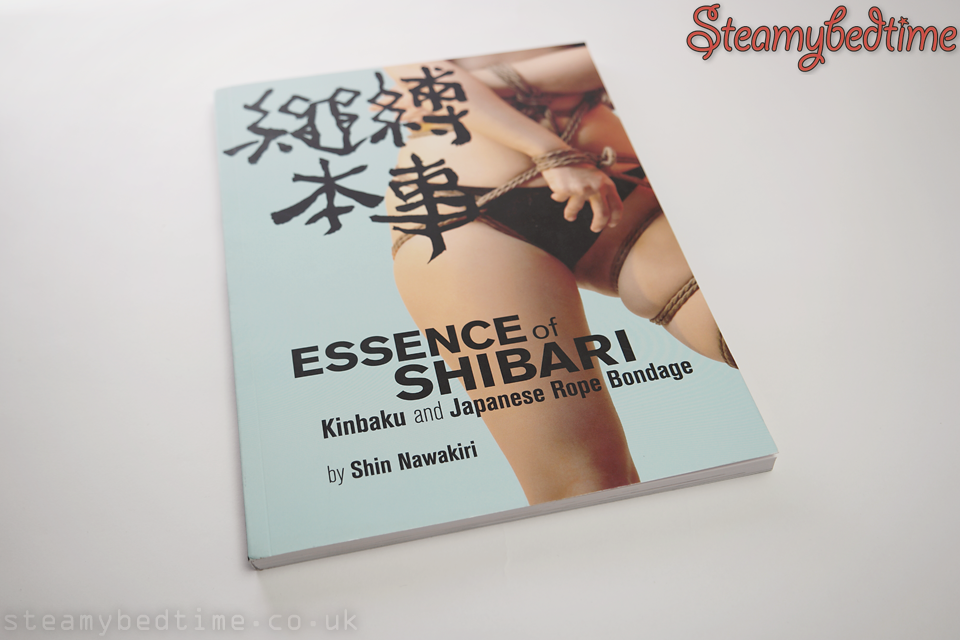The English translation of Shin Nawakiri's is the most recent rope bondage book we've bought since Chanta Rose's Bondage for Sex Volume 1 and its focus is firmly on more traditional Japanese sensual rope bondage. First published in 2013, it was originally only available in Chinese, but we spotted a message via Twitter announcing the release of an English translation on 1st May 2017. We found it on the Book Depository for around £12 (seems to have jumped in price now, but keep an eye out for a bargain!) and it has been a fabulous purchase.
Six months on, and we decided to embark on a photo-a-week project that we've tagged #kinbaku52. The attached thumbnail comes from Wide Single Columns, and follow us on Twitter for updates.
Our main avenue of learning at the moment is the website Shibari Classes, which is primarily video based teaching. It's an amazing resource, but sometimes it's also nice to browse through a physical book for inspiration. We've had the book for a couple of weeks and it feels to us that it's a very good companion to our other sources of learning.

The book is divided into 8 chapters, plus forwards and acknowledgements.
- Introduction
- Understanding Your Rope
- Delightful Kinbaku
- Basic Ties
- Safety Issues
- Common Kinbaku Ties
- Takate Kote (TK) Shibari Tie
- Practical Applications
The picture above is loosely based on the Futomomo technique taught in chapter 6, but bear in mind we've only had the book for just over a week and we were not following it like a recipe! It's a distinctively different style to other Futomomo tutorials that we've looked at, and in this scenario it was also more comfortable. Scroll down this page a bit further (note the black and white photo) and if you've been following our previous Kinbaku related blog posts you might spot that the tie on my right leg is heavily inspired by the Tying Techniques Part 1 from Shibari Classes.

Click the thumbnails below for a couple more example pages from the book. These pages are from 8.1 Application of Furniture, and 6.2.3 Akechi/Kanna Style Hip and Crotch Tie. The book is beautifully produced throughout, and these pages seem fairly representative of the teaching style. The chapters feature both male and female models and the photography is excellent.
Overall we found the book to be very approachable. There is some interesting history and psychology alongside the techniques, but even for us as beginners it never feels like it gets bogged down in too much detail. There is a wealth of information amongst its relatively modest 144 pages and the photos above give a perspective on the size of the book, a bit smaller than A4 size.

The photo above shows another tie inspired by the techniques in chapter six. We made it a very relaxed hands behind the head tie, intended to be comfortable to lie down on. It's a style that has worked well for us previously, particularly if you intend to lie across the bed, as the double-column tie at your wrists comes nicely into alignment with the edge of the bedframe.

To very briefly summarise the book's content, the forewards and chapters 1 and 2 introduce the book and discuss rope preparation and storage. We once described our attempts at rope processing in an earlier article, Preparation of Okinawa Jute Rope. It's interesting to see that this description sounds fairly similar to our experiences, and this is definitely a chapter we'll return to.
Chapter 3 - Delightful Kinbaku, is a very short chapter, but it is one of our favourites. It does a fantastic job of showing the intimate closeness and connection; exactly what we're looking for in our exploration of rope.
Chapters 4 and 5 cover some basic ties and safety guidance. There is never a sense that you're being swamped with information, but almost every knot we have ever used is covered, plus a couple more. We generally favour what I beleived to be known as a Somerville Bowline for single column ties, although interestingly Shin Nawakiri makes the argument that this knot is actually a Carrick Bend. Various frictions and hitches are covered, plus several methods for joining rope.
We've always used the familiar Larks Head method for joining ropes, sometimes collapsed into a Reef Knot, but the book gives a very clear and simple explanation of a sheet bend, which is an option we'd not previously tried.
I won't claim we're sufficiently qualified to independently evaluate the safety information in chapter 5, but it very closely corresponds to our existing knowledge, and appears to be very sound advice. The illustrations are good and everything is very well explained.
Chapters 6, 7 and 8, build on the earlier chapters, but now begin to focus in on some specific ties. Chapter 7 has a very thorough look at the classic Takate Kote tie, along with some specific and well illustrated safety advice.
Finally, the book closes with acknowledgments and some additional biographical information.

There is something intensely special about rope marks on skin, like an exquisite echo of what has so recently gone before. The marks fade pretty quickly, so if you enjoy this sort of sexy photography, be sure to have your camera at the ready! ;-)

After a couple of weeks with Shin Nawakiri's Essence of Shibari, we've read it cover to cover a couple of times and have looked at a couple of the sections in more depth. We're really pleased to have bought it. Our other books, Lee Harrington's Shibari You Can Use (and the "More" follow up) and Chanta Rose's Bondage for Sex, all feel slightly more westernised. They're excellent resources in their own right of course, but we really enjoyed the style of Essence of Shibari, which somehow seems to convey the spirit of Japanese rope more strongly.
Check it out - you most definitely will not be disappointed.
Summary
We have been reviewing Shin Nawakiri's book as relative newcomers to kinbaku. We felt there was certainly plenty here for beginners, but in reading the book we were both glad that we were starting with some existing, basic knowlege - essentially just what we've picked up from the beginner courses on Shibari Classes and our other books. Naturally it's harder for us to say how useful the book would be to someone who is already an expert. It feels like it's probably targetted more at a beginner and intermediate level.
Either way, it's a beautiful book at an extremely reasonable price and we are very happy to recommend it. At our level (about six months of light experience in Kinbaku) it's excellent.









